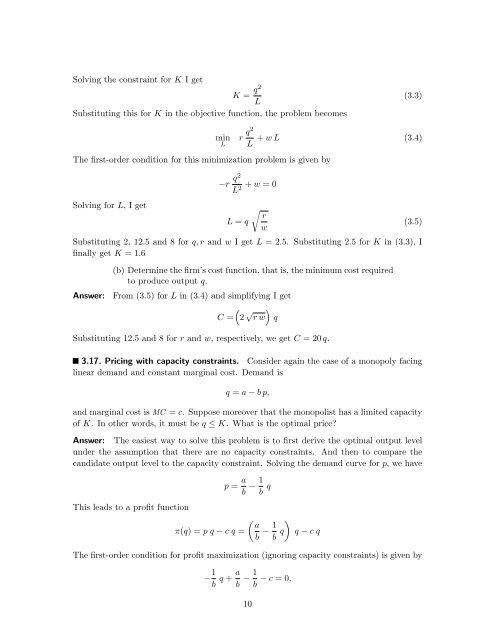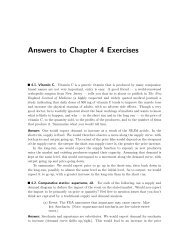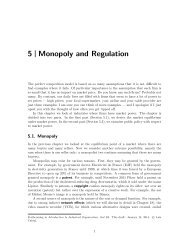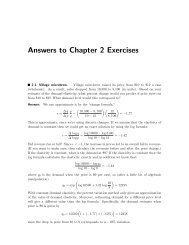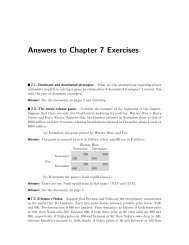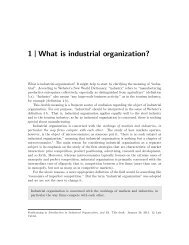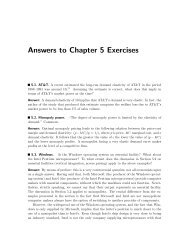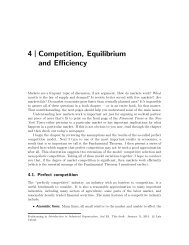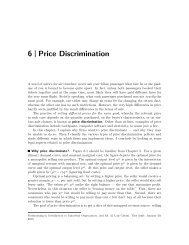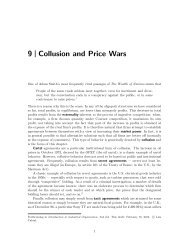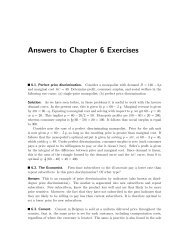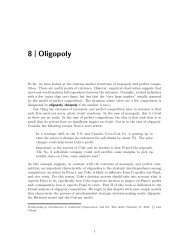Answers to Chapter 3 Exercises - Luiscabral.net
Answers to Chapter 3 Exercises - Luiscabral.net
Answers to Chapter 3 Exercises - Luiscabral.net
- No tags were found...
You also want an ePaper? Increase the reach of your titles
YUMPU automatically turns print PDFs into web optimized ePapers that Google loves.
Solving the constraint for K I getK = q2LSubstituting this for K in the objective function, the problem becomes(3.3)minLr q2LThe first-order condition for this minimization problem is given by+ wL (3.4)Solving for L, I getr q2L 2 + w =0r rL = qw(3.5)Substituting 2, 12.5 and 8 for q, r and w I get L =2.5. Substituting 2.5 for K in (3.3), Ifinally get K =1.6Answer:(b) Determine the firm’s cost function, that is, the minimum cost required<strong>to</strong> produce output q.From (3.5) for L in (3.4) and simplifying I get⇣C = 2 p ⌘rw qSubstituting 12.5 and 8 for r and w, respectively, we get C = 20 q.3.17. Pricing with capacity constraints. Consider again the case of a monopoly facinglinear demand and constant marginal cost. Demand isq = abp,and marginal cost is MC = c. Suppose moreover that the monopolist has a limited capacityof K. In other words, it must be q apple K. What is the optimal price?Answer: The easiest way <strong>to</strong> solve this problem is <strong>to</strong> first derive the optimal output levelunder the assumption that there are no capacity constraints. And then <strong>to</strong> compare thecandidate output level <strong>to</strong> the capacity constraint. Solving the demand curve for p, wehaveThis leads <strong>to</strong> a profit function⇡(q) =pqp = a b✓ acq=b1b q◆1b qThe first-order condition for profit maximization (ignoring capacity constraints) is given byqcq1b q + a b101bc =0,


